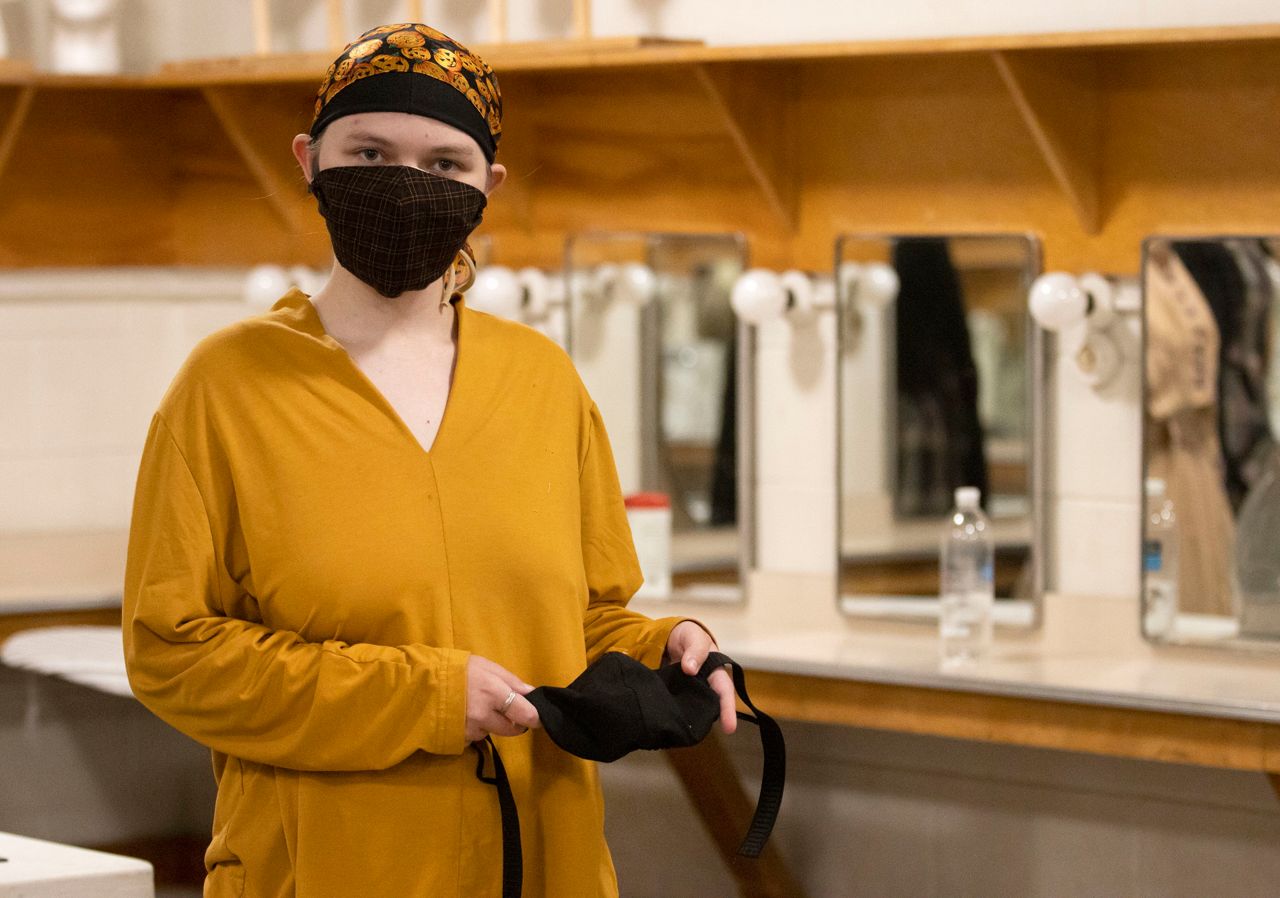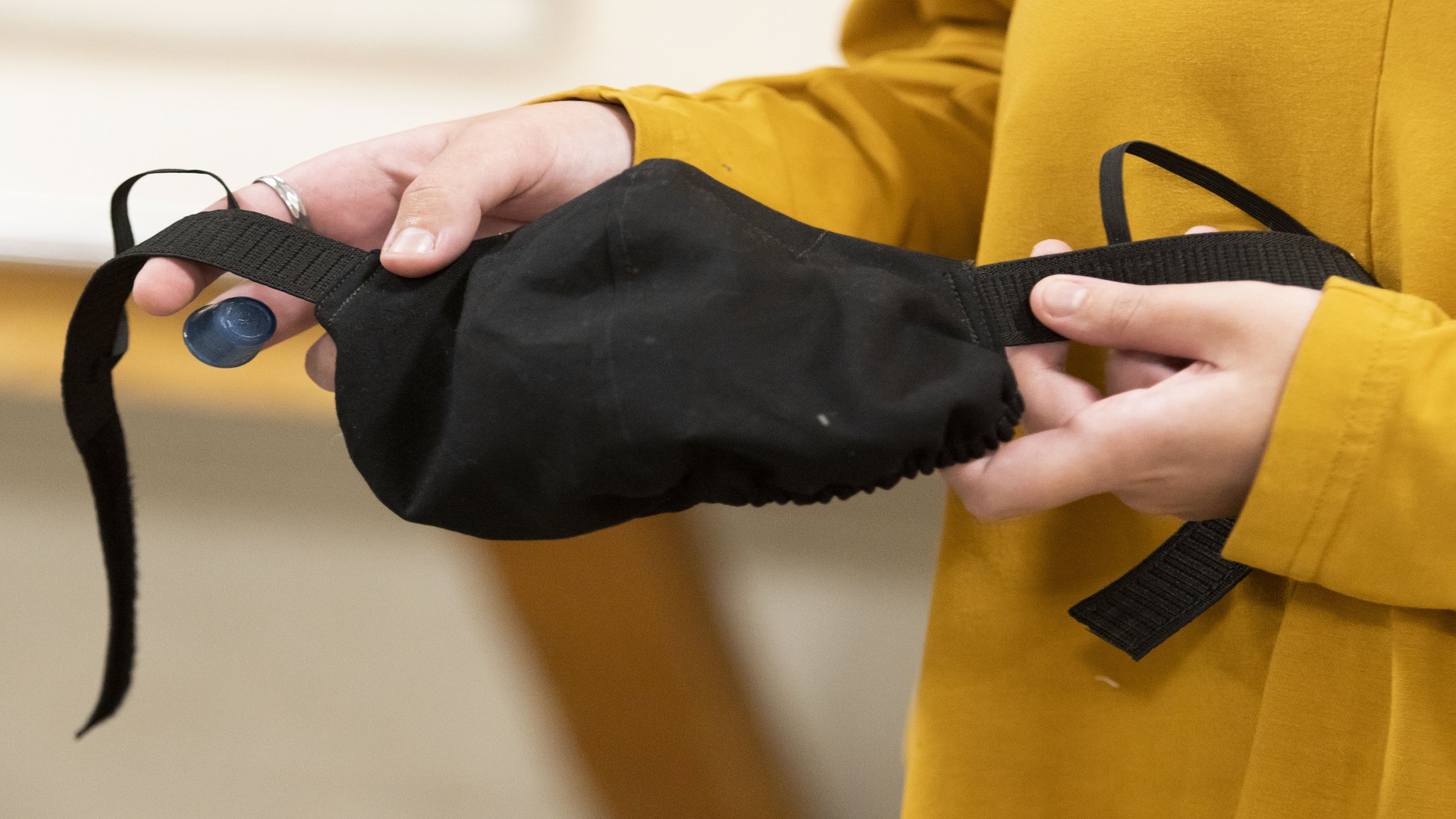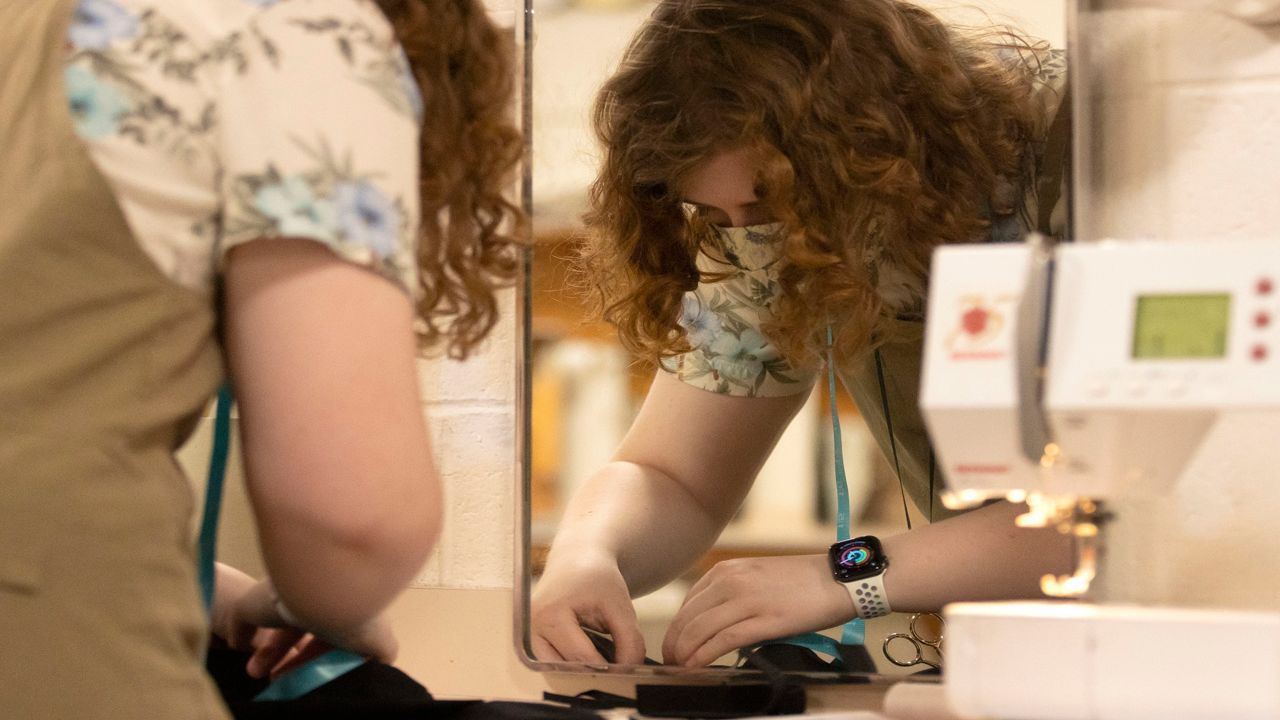APPLETON, Wis. — This is a story about luck, and timing, and ingenuity mixed with a large dose of creativity and blended with a group of people who found their thinking caps to solve a problem while simultaneously lifting a whole lot of spirits.
It’s not an easy trick.
It began when Lawrence University Dean of Conservatory Brian Pertl was perusing Facebook and happened upon a post from a former Lawrence music classmate, Katy Hopkins. She had started a side business, partly out of necessity and partly because her musician friends asked her for help, making specialty masks for musicians.
Hopkins had a woodwind repair business in Stoughton but with the pandemic forcing musicians out of work, their instruments were not in need of repair.
A lifelong sewer, Hopkins began to make masks for friends and family simply to help pass the time.
“About midway through the summer I started getting requests from my musician friends and colleagues about whether or not I could make them musicians masks,’’ she said.
With COVID not slowing down, school administrators and music professors were trying to avoid a repeat of the spring semester when music was made, but not together, not in the same room and not without virtual technology.
Problem was, masks and musicians were as compatible as Coke and computer keyboards.
This was not an easy assignment.
“It was a challenge and I ended up having to really kind of use my brain and come up with something that would really be effective,’’ Hopkins said. “I knew there was a need out there but I think so many teachers and deans of music are under huge pressure to ensure rehearsal situations are going to be as safe as possible.”
She went to work and designed three different masks — one for brass players, one for woodwinds and one for flutes.
Each mask has its individual challenges and there were plenty of trials and plenty of errors, but she continually tweaked her designs and sent her prototypes to her musician friends and then used their feedback to make the best, safest masks possible.
The next step was to put them on Etsy.com and see what would happen. Orders are what happened. Lots of them. The University of Memphis wanted 80, Capital University in Ohio asked for 90, and the requests just kept on coming.
In an instant, business was good. But there was one problem. She had a production staff of just one; herself. So when Pertl called to place his order of slightly more than 100 masks, she had to politely turn her former classmate and alma mater down.

But as you know there are no problems, only solutions.
Pertl knew the students in Karin Simonson Kopischke’s theater and arts costume design shop were just sitting on their pins and needles with not much to do. So he pitched the idea of Hopkins teaching the students how to make her masks.
Hopkins agreed and made the trip up to Appleton.
“Having her there to explain not only how she came up with the design but the little tricks she had learned along the way in making them was very helpful,’’ said Simonson Kopischke. “Katy wasn’t sure if we would get through talking about the three different masks and making one each. But at the end of the evening the students had made three or four each.’’
The following week production was running at full speed.
“We were sort of working like a professional costume shop, just cranking out lots and lots of things,” Simonson Kopischke said.
What this also enabled the Lawrence students to do, who use this class as part of their work study, is earn money toward their tuition or to put in their pockets.
So a win-win situation blossomed into a win-win-win event.

Prior to Hopkins’ mask designs, students had mostly been cutting slits in surgical masks. But now they have a far more functional and safer product.
Above all, they can do what they came to Lawrence to do.
“You just can’t underestimate that act of making music together,’’ said Pertl, “and how important this is and how, I don’t know; once we couldn’t do that all spring and now to be able to be together in the same room making music, there is a lot of gratitude but also a realization of how important this thing is we do.’’
Just as important as luck and timing and ingenuity.
“Everything was serendipity,’’ said Simonson Kopischke. “Every step of the way.”



